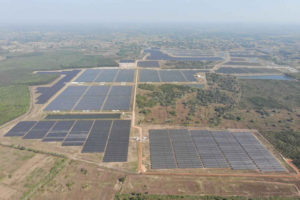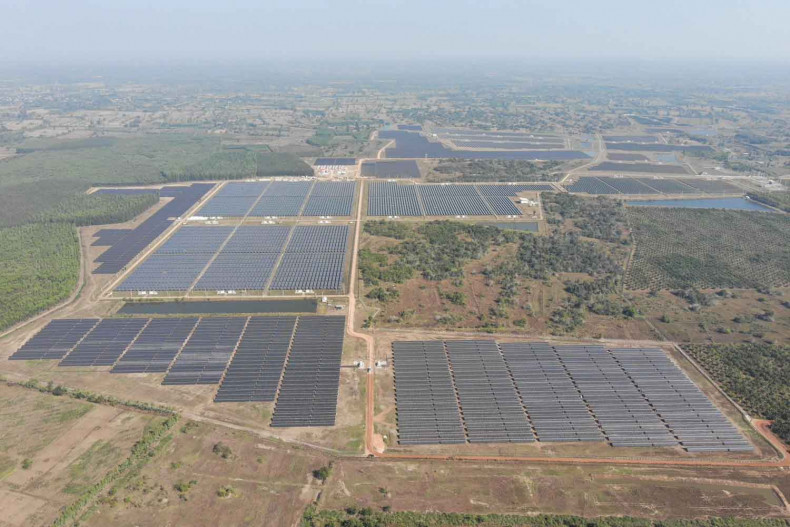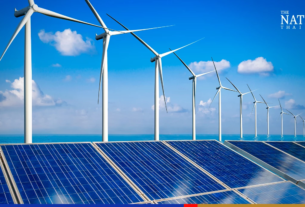
16MW solar farm launched by Super Energy Corporation in Sa Kaeo province, Thailand
SET-listed renewable power generation firm Super Energy Corporation has started operating a hybrid on-ground solar farm in the eastern province of Sa Kaeo, which promises an estimated internal rate of return of 13-15%.
The 16-megawatt facility is considered to be “hybrid” because it uses both a solar farm and an energy storage system (ESS) to supply electricity around the clock, said Jormsup Lochaya, chief executive of Super Energy.
Without the ESS, the solar farm will only produce electricity during the day for 5-6 hours, he said.
The company will operate the solar farm through its subsidiary Super Solar Hybrid Co.
In 2023, the company expects its revenue to grow by 13-15%, up from an estimated 11 billion baht last year.
Its solar farm is Thailand’s first hybrid renewable power facility under a “firm” power purchase agreement (PPA).
Often called a firm PPA, the agreement refers to a steady supply of electricity provided to the Electricity Generating Authority of Thailand.
Usually renewable power, except electricity produced by refuse-derived fuel, is in the “non-firm” PPA category. Sun, wind and biomass are intermittent sources of power because their production depends on weather conditions and seasons.
Super Energy’s hybrid solar farm is part of the company’s new renewable power projects, with combined electricity generation capacity of 542MW in Thailand and Vietnam, which are scheduled to operate over the next two years.
At present, the company runs power generation facilities with a total capacity of 1,608MW.
Thai energy officials are promoting the development of renewable energy, part of the state’s efforts to depend less on fossil fuels and cut carbon dioxide emissions.
Prime Minister Prayut Chan-o-cha vowed during the 26th UN Climate Change Conference in Glasgow in 2021 that Thailand would be more serious in addressing climate change, striving to reach carbon neutrality, a balance between carbon dioxide emissions and absorption, by 2050.
One key renewable energy scheme is the government’s plan to buy electricity from licensed companies, with combined generation capacity of 5.2 gigawatts, during the period 2022-2030.
The Energy Regulatory Commission, which oversees the project, is scheduled to announce the companies selected to join this scheme on March 15.
The 5.2GW capacity will come from four renewable sources: bio-gas (335MW), wind power (1,500MW), on-ground solar farms (2,368MW), and on-ground solar farms with energy storage systems (1,000MW).
In Vietnam, authorities will grant new licences to onshore and offshore wind farms, with combined capacity of 22,000MW, over the next decade, according to Super Energy.
Source: https://www.bangkokpost.com/business/2489480/sa-kaeo-solar-farm-launched


